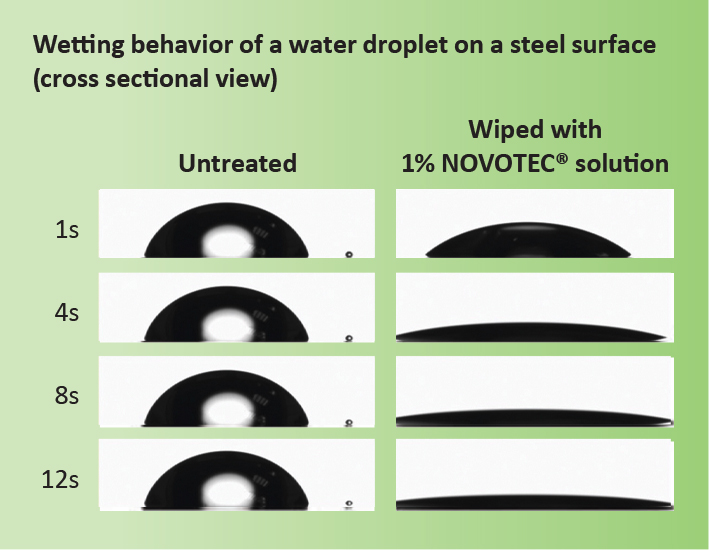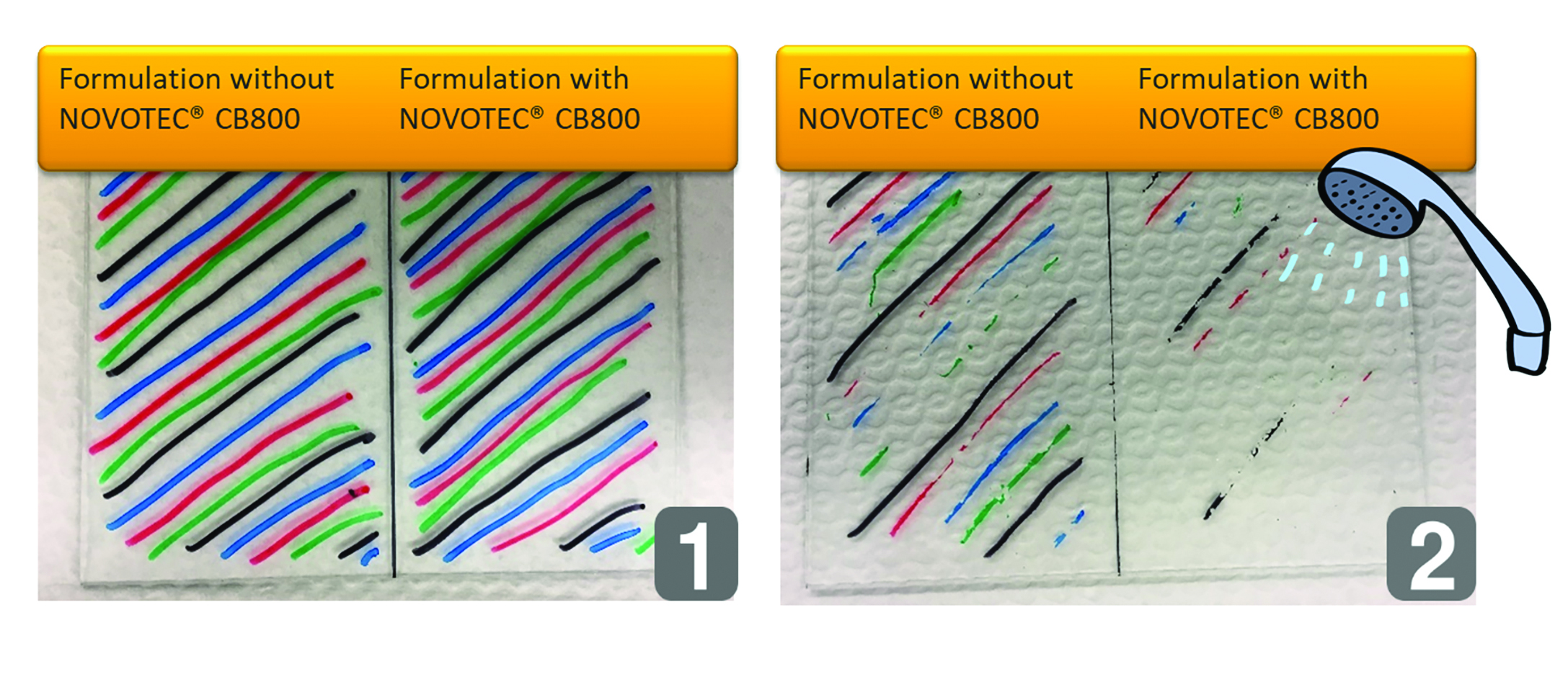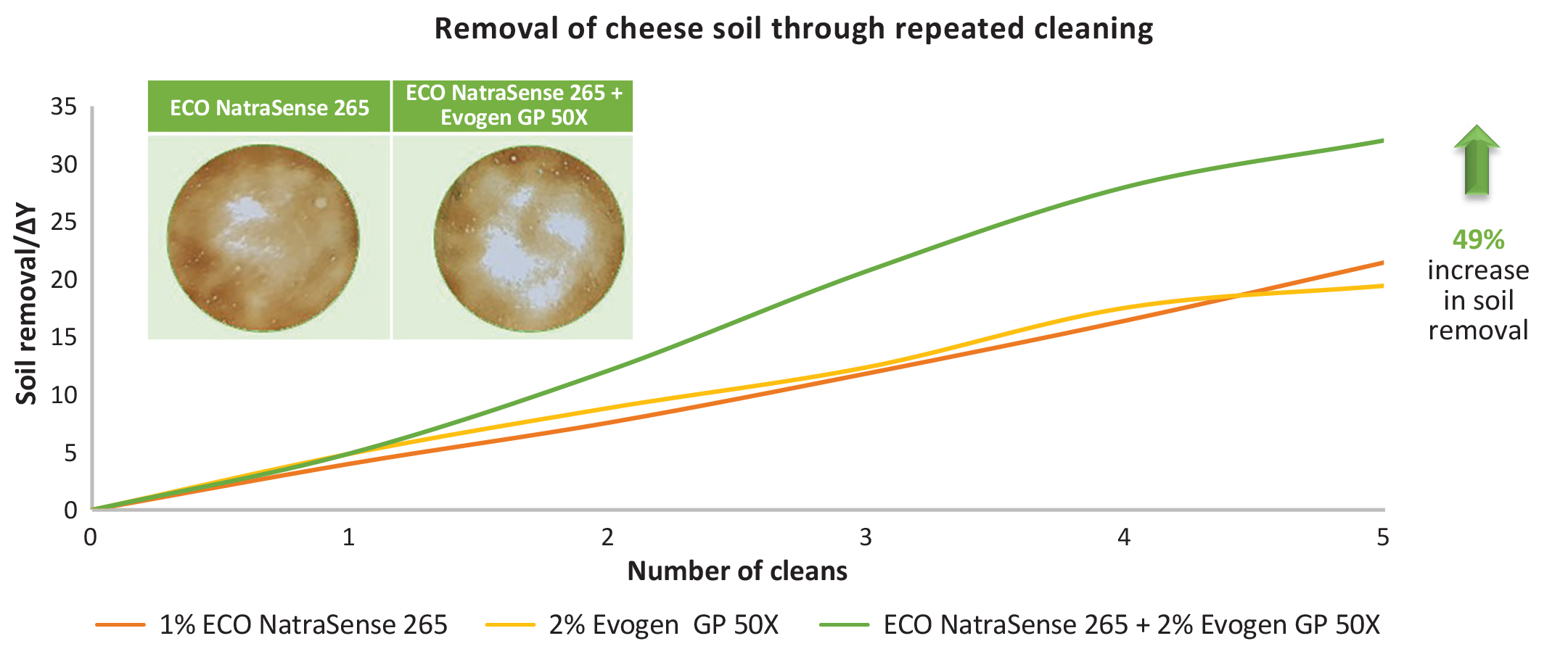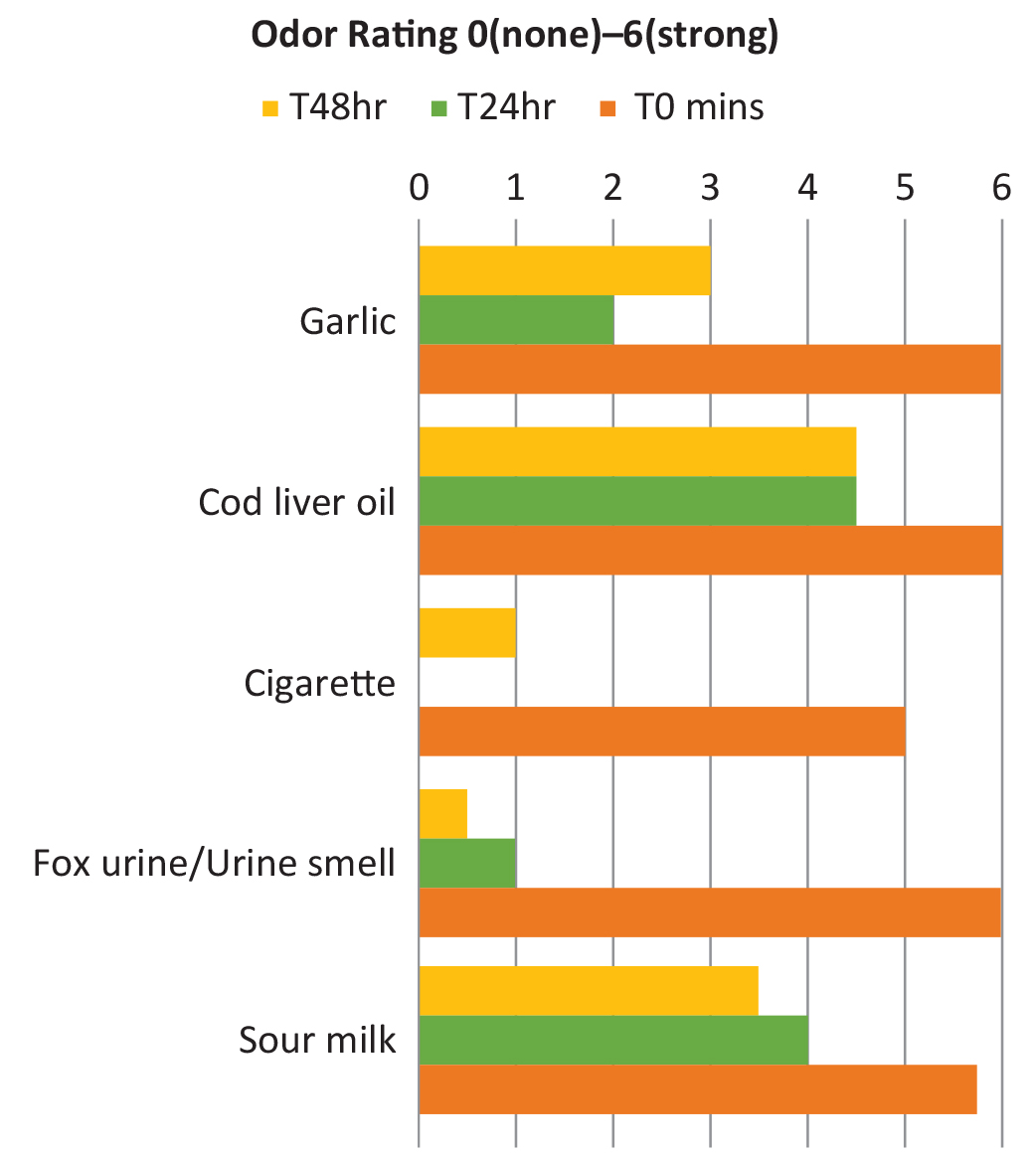The latest additions to eco-friendly cleaning
By Rebecca Guenard
May 2021
- Cleaning formulators are developing new ways to make household and industrial cleaners better for the environment, but will their ingredients be accepted by consumers?
- One company found that adding protein to cleaners for vehicles used in public transportation reduces how often they need to be cleaned.
- Another company experienced the same effect with probiotics. They have added them to household surface cleaners and odor neutralizers.
Between January and August of 2020, the cleaning products industry produced an extra 427,000 gallons of hand sanitizer and increased the volume of cleaning supplies produced by 23% compared to the previous year (https://www.cleaninginstitute.org/covid19report). The surge in production was, of course, due to the industry’s assistance with the COVID-19 public health crisis. Personal hygiene and disinfection may have ramped up since the pandemic, but they have always been essential to consumers.
As such an integral part of our everyday lives, the cleaning industry has also been committed to improving the sustainability of its products. Over the past decade, that goal has been primarily focused on eliminating petroleum-based ingredients from formulations. Researchers have developed plant-based surfactants using traditional chemical processing methods, as well as biosurfactants prepared from the fermentation of simple sugars and vegetable oils. Production of these biosurfactants has so far been prohibitively expensive, but recent sales of a rhamnolipid dish soap for South American markets indicate biosurfactants are becoming commercially viable.
In the meantime, some homecare ingredient manufacturers are developing new, innovative ways to clean. However, the function of these ingredients may be contradictory to consumers’ idea of clean. Instead of stripping a surface of all biological matter, they leave a layer of bacteria or protein behind. Yet, these ingredients use less water and fewer harsh chemicals while remaining effective longer than typical formulations, extending the duration between cleanings. If the current, environmentally friendly trend continues to dominate the market, these ingredients will become the norm and the industry will shift towards new ways to clean.
Protein additives for improving efficiency
“The development of our technology was a happy accident,” says Matthias Reihmann, head of global product management at Gelita, headquartered in Eberbach, Germany. The company primarily makes gelatin for food. Reihmann says they were approached by a specialized cleaning agent manufacturer, named Reinwerk Solutions, that hoped adding Gelita’s proteins would stabilize the microfoam structures in its industrial cleaners. One of its customers, a train company in northern Germany called Nord-Ostsee-Bahn (NOB), could not get its vehicle cleaners to foam properly during winter months.
After a short, empirical trial, Reinwerk Solutions and NOB informed Reihmann that typically dirty trains were coming back to the depot completely clean. “They found out that only the trains covered in the Gelita protein were clean after their route,” he says. “Then we started the scientific work to see what the proteins were doing to cause this effect.”
Gelita’s gelatin products are made from collagen, which has an atypical amino acid sequence that contains more hydroxyproline than is found in other types of protein. The greater amount of hydroxyproline leads to protein folding that results in thermally stable fiber networks that explain collagen’s purpose as a structural substance in the body. Interestingly, these properties lead to surface behavior that improves cleaning.
The researchers performed quartz crystal microbalance analysis (QCM-D) and contact angle measurements to identify how the protein interacted with the surface to cause the cleaning benefit. They applied a glass cleaner containing proteins onto a QCM-D sensor and measured, in real-time, the thickness of the protein layer that formed, as well as the film’s viscoelastic properties. The team determined that upon the first cleaning, the protein and surfactants assembled into soft multilayers approximately 20–30 nm thick. When rinsed with water, some of the layers partially dissolved, releasing surfactant, while a thin layer of protein remained on the surface.
Contact angle measurements on a variety of solutions containing the protein mixed with different surfactants indicated that glutamate-based surfactants worked most effectively to lower surface tension and improve cleaning (Fig. 1).
Gelita has since designated its cleaning additive, NOVOTEC® CB800 (Fig. 2, page 8). For over five years, the product has been successful throughout Europe as an additive in commercial vehicle cleaners. The experiments performed during that time indicate that the protective function of the protein endures for

approximately three months, even in demanding environmental conditions. When evaluating long-term operating costs, customers have found that NOVOTEC® CB800 eliminates the need for expensive, permanent coatings to protect vehicle paint. In fact, regularly using the product reduces repainting costs because the protein layer traps a thin film of water that shields dirt or sunlight from damaging the surface.
Reihmann says that the thin film of water the proteins trap at the surface prevent soil from penetrating into the paint. This allows the cleaning crew to remove the soil easily without aggressive cleaners. “You can cut back on the abrasiveness of your chemicals, which makes the cleaning safer for the workers and also more environmentally friendly,” he says. “You can get

a much easier cleaning process which translates into more cost saving and improved environmental impact of your operations.”
The idea of using surface coatings in hopes of reducing water use and cleanser alkalinity is not new. These types of products have been on the market for decades. However, they are mostly based on water-repellant products, like waxes, silicones, and other hydrophobic film-forming molecules that are primarily petrochemically sourced. “NOVOTEC® CB800 is a natural product based on a protein type that is also used in food and pharma applications, but it has a lot of interesting chemical properties, particularly for surface interactions,” says Eric Yezdimer, senior manager of research and business development at Gelita, USA.
With the proven success of their products in Europe and with positive feedback from South America, Gelita is pursuing North American markets for customers focused on decreasing the environmental impact of their cleaning formulations. Since the proteins have proven effective not just for vehicles, but also for household hard surface cleaners, they are planning to test other uses. “We have headed back to the lab to think about how it can best be used for fabrics,” says Reihmann. “We have started making formulations and doing some tests to develop a business case for a fabric product.”
Probiotics as cleaning ingredients
Advertising for current household cleaners emphasizes that cleaning means killing bacteria; however, as we have learned with the human gut, not all bacteria is out to get us. Encouraging the growth of good bacteria, called probiotics, can actually benefit hard surface cleaners.
The United Kingdom-based ingredient supply company, Croda, has recently launched two probiotic ingredients containing application-specific bacterial strains. One product, intended for hard surface cleaners, is comprised of bacterial strains that degrade common household organic soils.

The other is designed for odor-neutralizing products. It contains bacteria that decompose soils which cause malodors, as well as the malodor molecules themselves (Fig. 3).
The company claims its products are made from 100% bio-based ingredients. The ingredients also maintain hard surface cleanliness and odor control longer than cleaners attempting to wipe out all living micro-organisms (https://www.crodahomecare.com/en-gb/news/2021/01/genesis-biosciences-partnership).
Scott Jaynes, research and technology manager at Croda, explains that probiotics can make household cleaners more eco-friendly in multiple ways. One way is by requiring less surfactant. “The enzymes produced by the probiotics break down soils and malodors on surfaces effectively, which means that less surfactant is needed to get the same level of cleaning out of your products,” he says.
Surfactants are still required for the probiotic formulation to work most effectively. According to Jaynes, bacteria break down soils and odors, while surfactants help them to be solubilized and washed away. “The two products actually work synergistically,” he says. “The surfactants remove visible soils for an immediate short-term cleaning effect, while the bacteria activate over time to remove the invisible soils you cannot see.”
Another way Croda introduces more sustainability with these cleaners is by offering a range of 100% bio-based surfactants that can be combined with the probiotics. Jaynes says the probiotic ingredients are particularly effective when formulated with nonionic surfactants. Croda has a line of 100% renewable nonionic surfactants, known as the ECO Range, that are produced from plant-based alcohols and bio-based ethylene oxide, produced in their Delaware manufacturing site.
A household cleaning solution may seem like an unwelcoming environment for bacteria, but Jaynes says the probiotics are added to the formulation as spores, a dormant form of bacteria highly resistant to physical and chemical influences. Once the spores are applied to a soiled surface that provides a source of food and moisture, they will develop into growing bacteria. “The spores are stable with most other cleaning ingredients between a pH of about 4.5 to 10.5, so, they can be easily formulated into a wide range of household products,” he says. Highly acidic or alkaline cleaners could deteriorate the spores and kill the bacteria, he admits, but the whole goal of the green cleaning trend is to avoid such extremes and replace hazardous formulations with safer, more sustainable alternatives.
Probiotic cleaners are not a completely new concept. They have been applied in industrial and institutional settings for years as floor and grease trap cleaners. Recent advancements in identifying, growing, and isolating these native bacterial strains have made them easier to produce and more effective for a wider market. However, consumers’ minds have been ingrained with the message that all surfaces should be bacteria-free. Convincing them that it is beneficial for microbes to colonize their countertops could be a barrier
Jaynes says that consumer interest in probiotic cleaners is growing in more developed areas of the world, like Europe, Asia, and North America. Market research conducted by Croda and other research firms showed that consumers around the globe are willing to try these cleaners. It helps that the cleaners have no special storage requirements and can be stored in a cabinet just like similar products containing no bacteria.
Another incentive that may win apprehensive consumers over is the product’s endurance. Probiotic cleaners do not stop working as soon as they are wiped away like conventional household cleaners do. The bacteria stay on a surface and keep cleaning for an extended time, breaking down soil and malodor molecules for several days after application (Fig. 4). Traditional cleaners can only offer cleaning at the moment they are applied. “Probiotics harness the power of nature to make cleaning more convenient for consumers,” says Jaynes. “That is what we refer to as ‘letting nature do the work.’”
Solving the problem of sustainable surfactants
Between 2018 and 2019 the number of consumers who believed companies should invest in sustainability rose from 65 to 87%, according to an Innova Market Insights survey (https://tinyurl.com/sustanabilitytrends). The homecare industry has focused on fulfilling this desire for years by reducing plastic packaging, increasing biobased ingredients, and developing detergents that operate at lower temperatures.
The new surface cleaners described here are examples of the industry’s ingenuity in certain sectors. But the industry must still solve the challenge of surfactants if it wants to reach its environmental goals. In a recent interview, Neil Parry, R&D program director for biotechnology and biosourcing at Unilever in the United Kingdom, said that in terms of volume, surfactants continue to be the biggest obstacle to sustainability. His company recently announced that in the next 10 years they will go from 16% renewable or recycled carbon to 100% (https://cen.acs.org/business/consumer-products/Cutting-carbon-cleaning-Unilever/99/i2).
Surfactants made from petrochemicals make up about half the surfactant volume on the market, particularly in laundry and dish detergent formulations. The non-renewable ingredients offer performance that consumers will not forfeit for an eco-friendly alternative. Even where formulators have been able to maintain performance through a plant-based ingredient, the source is predominately palm oil.
Palm oil’s long-chain fatty acids make it ideal for producing plant-based surfactants, but palm tree agriculture does not have a reputation for sustainability, or for that matter, humane labor practices. As interest in finding plant-based alternatives to petrochemicals has increased in the past 50 years, so has palm agriculture. The Roundtable on Sustainable Palm Oil (RSPO) was established in 2004 to promote sustainable palm oil growth. All major brands in the household cleaner industry have committed to including only RSPO-certified palm oil in their formulations.
In the meantime, big-name investors, like Bill Gates, have put money into biotechnology start-ups that make palm oil using fermentation (https://tinyurl.com/palmoilthrufermentation). The company Gates supports, C16 Biosciences, is one of a handful implementing this technology in an effort to end deforestation. The cofounder and CEO of C16, Shara Ticku,

told Fast Company magazine recently that her company can produce 3 million metric tons of palm oil a year. That amount represents only 5% of the yearly global production. Although it may not seem like much, with innovative ingredients like proteins and bacteria combined with the enzymes already common in some household cleaners, the industry could require fewer palm oil derivatives in the future.
The green cleaning movement has been a gleaming example of how to make an industry more eco-friendly. In some cases, that has involved re-defining “clean”, and so far consumers seem to have accepted the new definitions. As the cleaning industry accepts even greater challenges toward achieving sustainability, their past success will hopefully reflect what they can accomplish in the future.
About the Author
Rebecca Guenard is the associate editor of Inform at AOCS. She can be contacted at rebecca.guenard@aocs.org
Information
Effective cleaning through a second skin–Why proteins improve cleaning, Reihmann, M., et al., SOFW Journal, Volume 146, March 12, 2020.
Sustainable cost reduction in the exterior cleaning of trains and buses, Becker, H., ETR, 5, 67, 2015.


